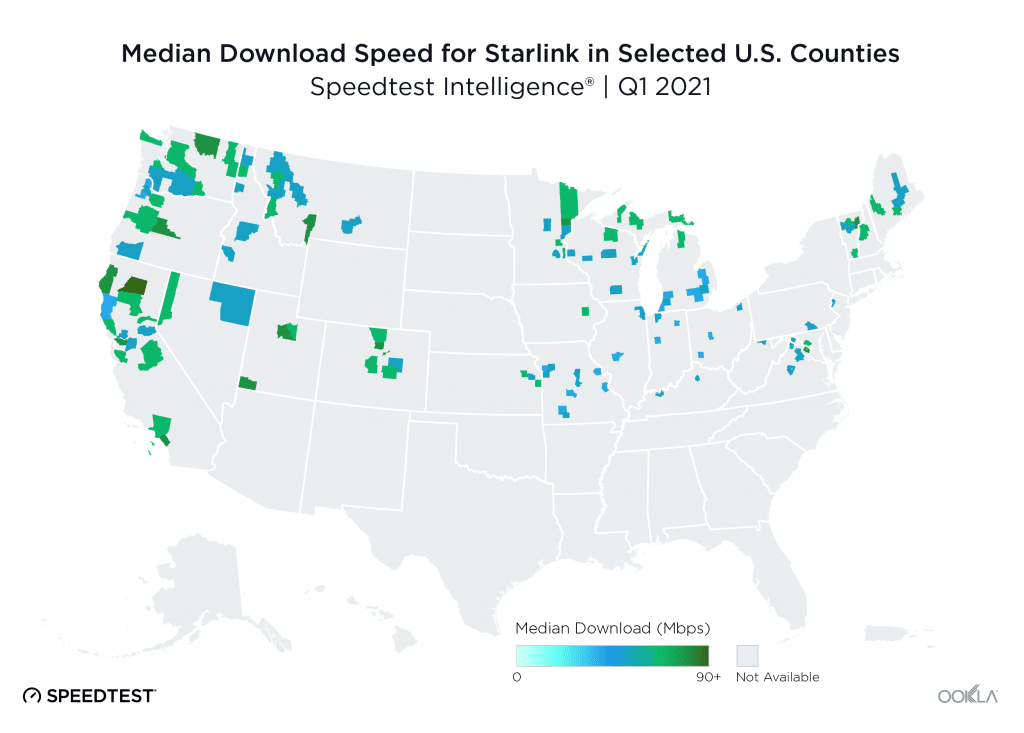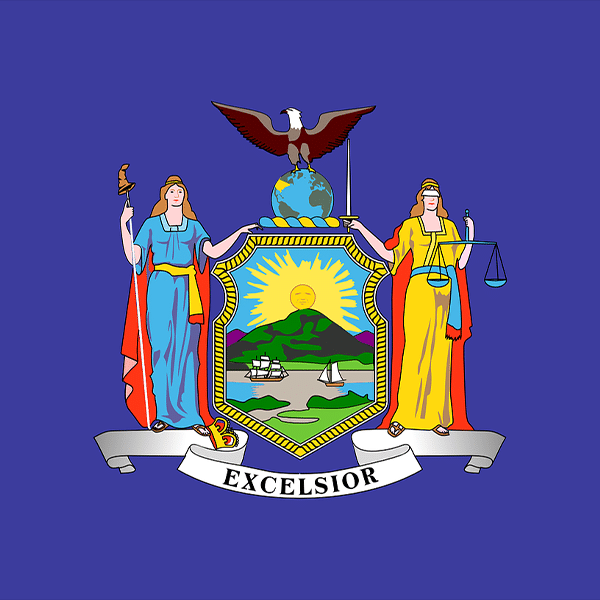U.S. subscribers using Space X’s Starlink non-geostationary satellite broadband service experienced median download speeds between 40 and 93 Mbps in the first quarter of 2021, according to tests conducted using Ookla’s speed test technology. Median latency for the service varied from 31 ms to 88 ms.
The findings suggest that unless something changes, Starlink could have trouble meeting its service performance commitments in the FCC Rural Digital Opportunity Fund (RDOF) program. The FCC tentatively awarded SpaceX nearly a billion dollars to cover some of the costs of providing above-baseline, low-latency service to 642,000 unserved locations in 35 states.
The above-baseline, low-latency service tier is defined as service providing speeds of at least 100 Mbps downstream and 20 Mbps upstream, with latency below 100 ms. The Ookla data suggests that if Space X were gauged by its performance in the first quarter of this year, the company would be able to meet its RDOF latency requirements, but not its downstream speed requirements.
The Ookla results don’t match what SpaceX told the FCC about Starlink speeds in a recent filing. The company said customers already were getting speeds of 100 Mbps downstream, so Telecompetitor checked with Ookla about the correct interpretation of the speed test data and a spokesperson confirmed that the tests measure the full capacity of an internet connection.
“Each time a user takes a Speedtest, a snapshot of the internet is captured for that specific time, place, device and network,” the spokesperson explained in an email to Telecompetitor. “Since these tests are initiated by consumers when and where they need performance data, Speedtest gives users accurate information about internet speeds at the times and locations that are important to them. When aggregated, these measurements describe the network’s real-world performance.”
It’s important to note, though, that the performance of Starlink service could improve by the time SpaceX begins providing service in RDOF areas. In late February, SpaceX CEO Elon Musk said he expects the service to support speeds of 300 Mbps with latency below 20 ms this year.
Musk’s comments came before SpaceX got the go-ahead from the FCC to use lower orbits for its satellites and to use a lower elevation angle for its earth-based antennas and receivers – changes designed to improve Starlink performance.
The FCC ruling wasn’t a slam-dunk because the commission warned SpaceX that the go-ahead could be withdrawn depending on the results of a separate proceeding underway at the commission. But considering that Musk’s comments came before the ruling, perhaps the company will be able to meet the RDOF requirements even if the latest potential Starlink modifications are disapproved.
Starlink Speeds
Many eyes are on Starlink these days, as some entities have questioned whether the company will be able to meet RDOF requirements and some have argued that the FCC should not approve SpaceX’s RDOF long-form application, which would finalize the company’s ability to receive RDOF funding. SpaceX recently revealed it has 500K pre-orders for the service.
Some additional details of the Ookla Starlink speed testing.
- Starlink’s lowest median download speed was 40.4 Mbps in Columbia County, Oregon. Its highest median download speed was 93.1 Mbps in Shasta County, California

- In some areas, Starlink median download speeds exceeded the median download speeds of all other fixed broadband providers. (In Tehama County, California, Starlink was 545.6% faster.) But in other areas, Starlink’s median download speeds were lower than the median of the other providers. The lowest such measurement was in Clay County, Missouri, where Starlink median download speeds were 67.9% of the other providers.
- Ironically, even though Starlink met the FCC’s definition for low-latency service, Starlink latency was higher than all other providers in all but one county that Ookla studied.



